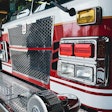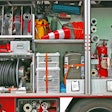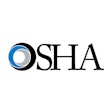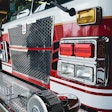
During American Feed Industry Association's Feed Education Program at the 2022 International Production & Processing Expo 2022 on Wednesday morning, John Dillard, principal with OFW Food and Agriculture, spoke on the importance of having a pandemic policy in place for the well being of employees, as well as if OSHA comes knocking.
"As a facility, you should consider having a plan in place, not just for COVID, but for any future pandemics that come our way," says Dillard.
Developing a plan, says Dillard means providing a written and clearly communicated plan to address infectious diseases, including COVID-19, in the workplace.
"Designate a leader or team responsible for implementing this plan," says Dillard.
He says to incorporate guidance from federal sources, such as OSHA and the CDC, state and local healthy agencies.
"Benefits of developing a plan will include reduced absenteeism and reduced supply and delivery interruptions," he says. "And you'll be prepared for the next pandemic."
There are four items to cover in your written plan says Dillard.
- Evaluate Exposure Risks
Consider and address levels of risk association with your worksite and job tasks. Evaluate ways in which employees can be exposed at the workplace, including from coworkers, contractors customers and the general public. Also consider risk of exposure from their home or in community setttings. What are the workers individual risk factors like age, immunocompromised, chronic risk factors, etc.? Help identify controls that will address these risks. - Prepare Contingency Plans
Account for the possibility of increased absenteeism rates. Cross-train workers across different jobs/skills to maintain operations. Include exposure-reducing measures such as social distancing, staggered work shifts, downsizing operations and delivering remotely. Prepare for interrupted supply chains or delayed deliveries. - Adopt Basic Infection Prevention Measures
Promote frequent hand washing and provide appropriate soap and sanitizer stations. Encourage workers to stay home if they're sick. Encourage cough and sneeze etiquette. Explore options for reducing contact, such as telework, physical distancing and staggered shifts. Discourage shared equipment and supplies when feasible. And maintain your housekeeping by cleaning and disinfecting work areas. - Develop Procedures for Identification and Isolation of Sick Employees
Educate employees on self-monitoring for signs and symptoms. Establish a policy for employees to report when they're sick or have COVID-19 symptoms. Isolate employees that report they're ill or have symptoms. Consider screening measures, such as temperature checks or symptom questionnaire upon entry. This should be used for employees and others onsite including contractors. Consider implementing a testing program.
It's important to know what incentivizes employees to show up, says Dillard.
"Do you have policies to encourage workers to stay home when they're feeling sick and could expose other workers?" asks Dillard.
"Encourage them to stay home when they're not feeling well. Offer flexible sick policies so they're not losing income. Understand family care policies and be flexible if their family members get sick."
Gary Huddleston, director of Feed Manufacturing & Regulatory Affairs with AFIA, noted that if OSHA comes into your facility and you have a written pandemic policy in place that you're following, that's a good place to be in.
"If you don't have one, that's not a good place," says Huddleston. "Having a written policy is your best insurance policy."


















